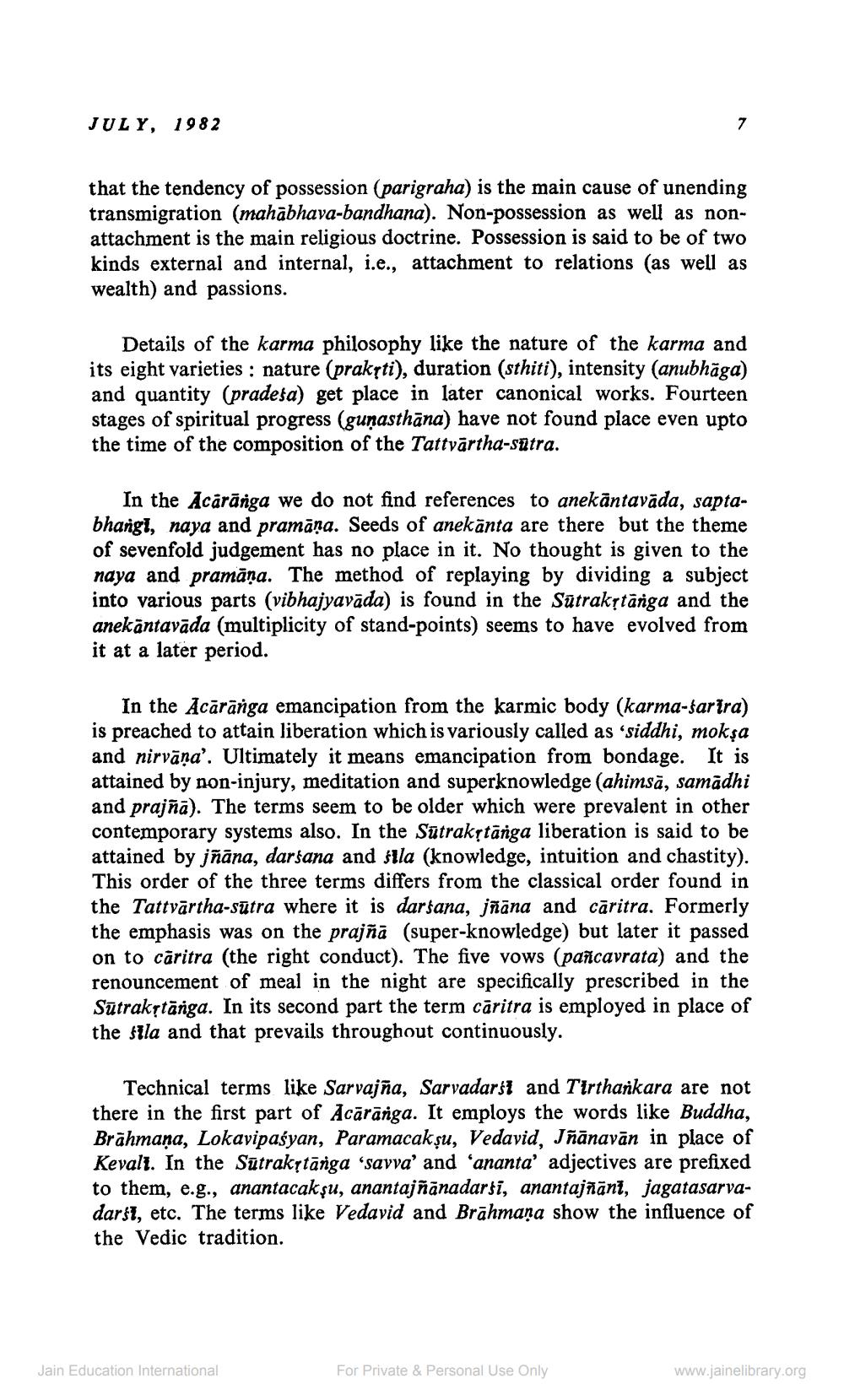________________
JULY, 1982
that the tendency of possession (parigraha) is the main cause of unending transmigration (mahābhava-bandhana). Non-possession as well as nonattachment is the main religious doctrine. Possession is said to be of two kinds external and internal, i.e., attachment to relations (as well as wealth) and passions.
7
Details of the karma philosophy like the nature of the karma and its eight varieties: nature (prakṛti), duration (sthiti), intensity (anubhāga) and quantity (pradesa) get place in later canonical works. Fourteen stages of spiritual progress (guṇasthāna) have not found place even upto the time of the composition of the Tattvartha-sutra.
In the Acaranga we do not find references to anekāntavāda, saptabhangi, naya and pramāna. Seeds of anekanta are there but the theme of sevenfold judgement has no place in it. No thought is given to the naya and pramāṇa. The method of replaying by dividing a subject into various parts (vibhajyavāda) is found in the Sutrakṛtanga and the anekāntavāda (multiplicity of stand-points) seems to have evolved from it at a later period.
In the Acaranga emancipation from the karmic body (karma-sarira) is preached to attain liberation which is variously called as 'siddhi, mokşa and nirvāṇa'. Ultimately it means emancipation from bondage. It is attained by non-injury, meditation and superknowledge (ahimsă, samādhi and prajñā). The terms seem to be older which were prevalent in other contemporary systems also. In the Sutrakṛtänga liberation is said to be attained by jñāna, darsana and sila (knowledge, intuition and chastity). This order of the three terms differs from the classical order found in the Tattvartha-sutra where it is darsana, jñāna and caritra. Formerly the emphasis was on the prajñā (super-knowledge) but later it passed on to caritra (the right conduct). The five vows (pañcavrata) and the renouncement of meal in the night are specifically prescribed in the Sutrakṛtānga. In its second part the term caritra is employed in place of the sila and that prevails throughout continuously.
Technical terms like Sarvajña, Sarvadarsi and Tirthankara are not there in the first part of Acārānga. It employs the words like Buddha, Brāhmaṇa, Lokavipaśyan, Paramacakṣu, Vedavid, Jñānavān in place of Kevalt. In the Sutrakṛtānga 'savva' and 'ananta' adjectives are prefixed to them, e.g., anantacakşu, anantajñānadarsi, anantajñānī, jagatasarvadarst, etc. The terms like Vedavid and Brāhmaṇa show the influence of the Vedic tradition.
Jain Education International
For Private & Personal Use Only
www.jainelibrary.org




